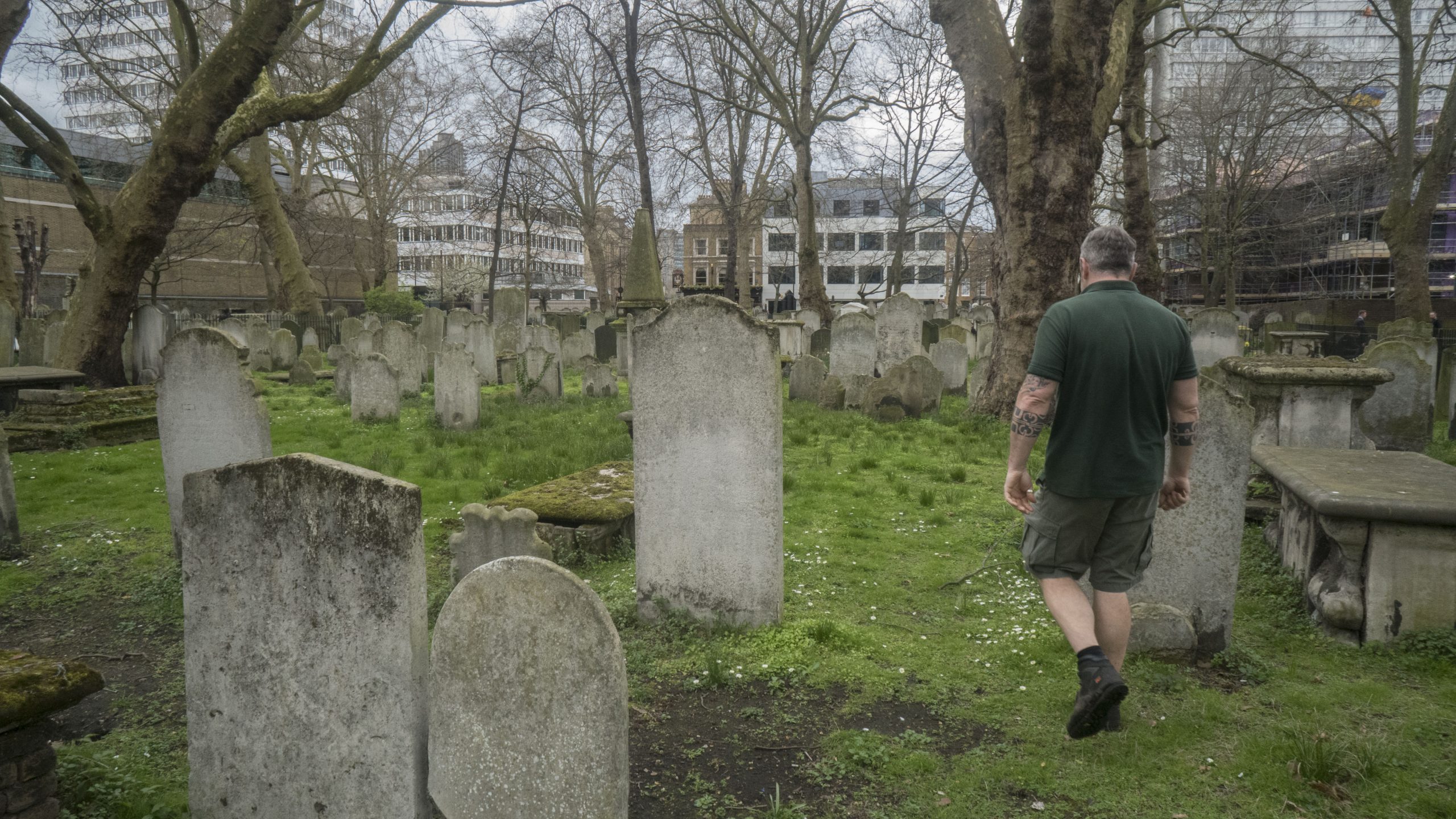
I really like Magnus Manske’s WikiShootMe tool. It visualises Wikidata items, Commons photos and Wikipedia articles on an OpenStreetMap. Wikidata items are shown as red if they have no photo and green if they do have one. For the past few months, I’ve been spending my lunch hours walking around the area near the Wikimedia UK offices, trying to turn red data points into green ones.

The biggest concentration of data items near our office was in Bunhill Fields, a famous cemetery just outside the old city walls of London. It opened in the 17th century, and had over 100,000 people buried there before it closed in the middle of the 19th century. Because of its location, it became a home for many nonconformist Christians, especially Methodists, as it is just over the road from the the Methodist Chapel of John Wesley. Daniel Defoe, William Blake and John Bunyan are buried there, along with Wesley’s mother Susanna.
Bunhill fields is a beautiful place to walk through, and now, thanks to the linked data I’ve attached to the Wikidata items for the listed graves in the cemetery, you can view images of all of the graves to identify which one is which as you walk around the site. I’ve also created a hyperlapse video showing a walk around the cemetery which is CC licensed.
Most of the gravesites are enclosed, but I could take photos of many of the graves from the paths, and on some days, groups of volunteer gardeners manage the enclosures, and are happy to let you enter to take photos. The park attendant was also very helpful, and let me look at his book showing the locations of graves whose inscriptions had become illegible, which helped to identify many of them.

Eventually, I ticked all the graves off the list, and I have to say that it was quite fun and satisfying. I’ve always felt that there is an underlying element of gamification within the Wikimedia projects. People take pride in having lots of edits or uploads, completing tasks and being the person who started particular articles. If these elements could be made more satisfying within the overall user experience of editing Wikimedia projects, it could encourage many more editors to participate.
In May, there are two hackathons taking place for developers working on Wikimedia projects in Prague and Vienna, and there will be a particular focus on the Wikimedia Commons Uploader, an android app that will make uploading easier. Currently, the web browser is a pain to use, and you can only upload 50 photos at a time. With millions of people in the developing world becoming connected to the internet through their mobiles, we need to improve the user experience for the projects, especially on mobile phones.
Imagine a Pokemon style application which took you on a walking tour of you nearby location, pointing out historical heritage and showing you the geolocated data that exists and encouraging you to fill in the gaps, taking photos or adding descriptions or other fields. Rewarding the editors with points for valuable edits and uploads could make the whole experience much more enjoyable and encourage people to edit who would never normally consider it.
We have a long way to go in developing our open source community, but there are exciting possibilities ahead as our movement evolves to meet new challenges and fix old problems.
____________________________________________________________________________
If you’re interested to get involved and learn more about Wikidata and how it works, you can sign up here to attend our Wikidata hackathon on Saturday April 8 at the Wikimedia UK offices near Old Street.







A big fat YES to the gamification comment, was just talking about this the other day.